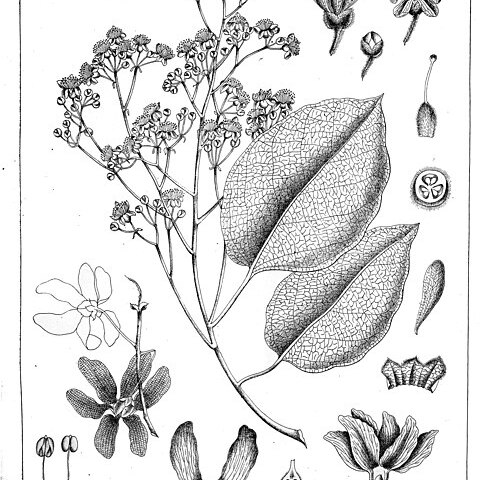Trees 4-6(-35) m tall, 10-20 cm d.b.h. Stipules filiform, 1-2 cm, glabrous; petiole 3.5-10 cm; leaf blade ovate to ovate-oblong, 10-20(-25) × 6-8(-14) cm, thinly leathery, very sparsely stellate pubescent, soon glabrous, lateral veins 4 or 5 pairs, base cordate, apex acuminate. Panicles to ca. 20 cm, hairy. Pedicel ca. 10 mm. Calyx 3-5-lobed, 3-5 mm, lobes triangular-ovate, hairy. Petals white or pink, filiform, 6-8 mm, becoming reflexed. Stamens 5-6 mm. Ovary hairy; style short. Capsule with persistent calyx, globose, 1-1.3 cm wide, pubescent, with 6(or 8) horizontally spreading thin wings, wings 2.5-3 × 0.7-1 cm. Seeds ca. 6 × 3 mm, with brown or yellow, caducous bristles.
Tree to 20 m tall.. Leaves ovate, 10–24 cm long, 8–10 cm wide, shortly acuminate at the apex, cordate, entire to sinuate-dentate, glabrous or almost so.. Flowers white in ample terminal panicles; corolla longer than calyx.. Capsule 6-winged.. Rather similar to the native Carpodiptera .
A tree. It can grow 20 m tall or higher. The trunk is 10-20 cm across. The leaves are oval and 10-20 cm long by 8-10 cm wide. The flowers are white and in groups at the ends of branches. The fruit is a 6 winged capsule.

